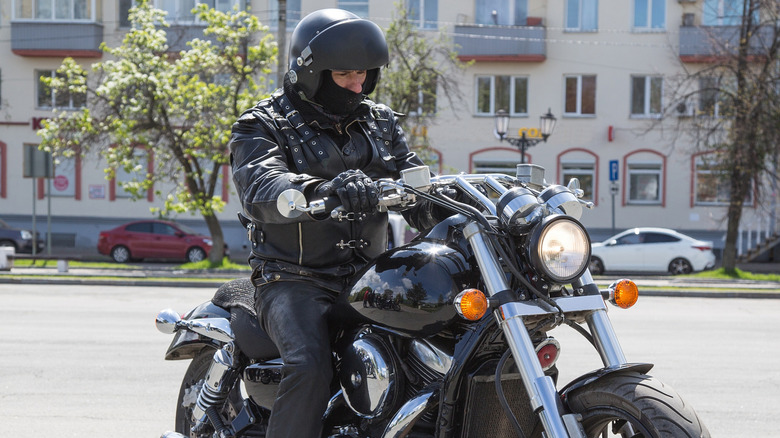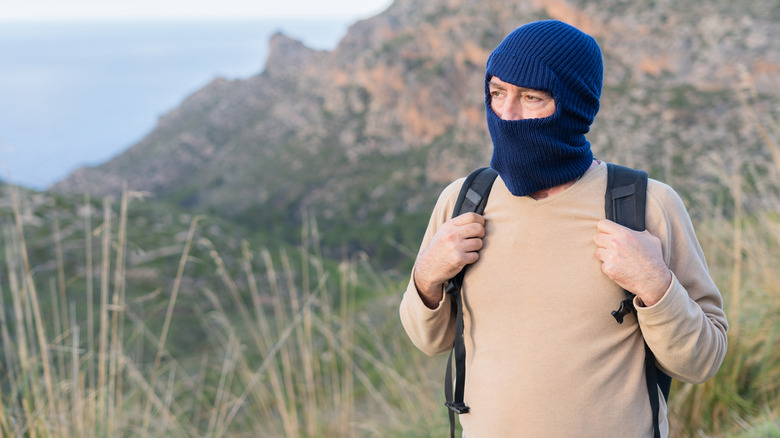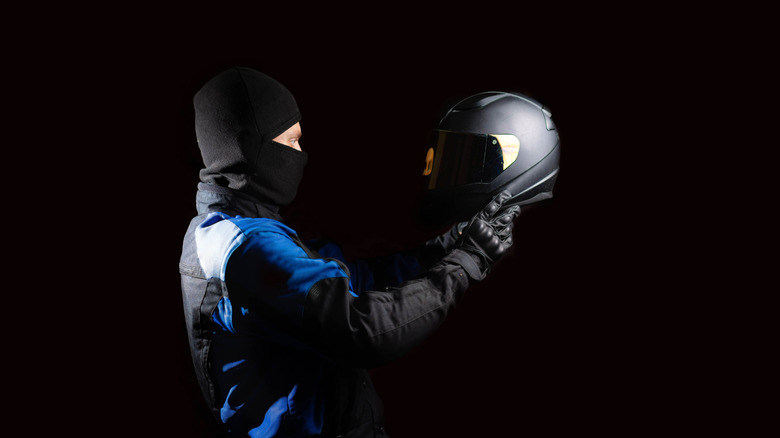What Is A Balaclava & Why Do Bikers Use It Under Their Helmets?
We may receive a commission on purchases made from links.
The most common thing to see on a motorcycle rider's head is, of course, a helmet. They keep you safe, and some helmets look pretty cool doing it. While a motorcycle helmet is required for safe biking, though — and in many states, for legal biking — it's not the only head accessory you may spot on riders. For instance, if you happen to catch a glimpse beneath the rider's helmet, especially in colder seasons, you might notice a distinctive fabric covering obscuring a good portion of their face.
This fabric covering is known as a balaclava, a classic face accessory with roots dating as far back as the Battle of Balaclava in 19th-century Ukraine. If you've never heard the word "balaclava" before, you might be familiar with its more common name, the ski mask. While the name implies that these coverings are only intended for skiing and other winter sports, motorcycle riders can actually get quite a bit of use out of a balaclava, including protection from the elements and some simple convenience.
A balaclava is a fabric mask that covers most of your face and head
A balaclava is a fabric mask that covers the majority of your face, with built-in holes leaving a few essential spots like your nose and eyes uncovered. In the olden days, balaclavas were made of wool, since that was the best material for preserving body heat. These days, wool is still used, but so are more flexible fabrics like fleece, as well as synthetic materials such as nylon, polyester, and neoprene.
Different kinds of balaclava can cover your face differently. The archetypal balaclava almost completely covers your face, with the only exception being your eyes. Some balaclavas have multiple holes for your eyes and mouth, while others only cover the lower half of your face. Some fancier balaclavas have an adjustable layer allowing them to be worn as full head coverings, face coverings, or neck gaiters.
Balaclavas offer bikers protection and convenience
While a balaclava is ostensibly for winter sporting purposes, it's a naturally beneficial accessory for anyone engaged in high-speed personal movement, such as riding a motorcycle. Just like a skier heading down a slope, a biker can wear a balaclava under their helmet to help protect their face from the chilling winds of the open highway, especially during frigid winter weather. By cutting down on areas of exposed skin like your mouth and forehead, you retain your heat much better. This Carhartt version includes Thinsulate insulation to keep in the warmth.
As balaclavas are typically made of breathable, sweat-wicking materials, they're also among the motorcycle accessories that will help you ride in extreme heat. Some, like the Fuinloth Balaclava, block ultraviolet rays and will protect your face from the sun.
Protection from the elements isn't the only reason for a biker to wear a balaclava, though; they also afford a bit of extra convenience. For instance, if you have a lot of hair or wear accessories like earrings, it can be difficult to cram all of that into a helmet. Wearing a balaclava can make it much easier to put on and remove your helmet. Having an extra layer between your head and the helmet's padding also helps keep those pads from getting sweaty and gross during an extended ride.


